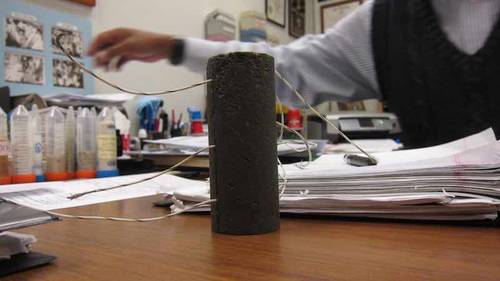
Plant Engineering reports that a researcher is trying to give cement sensing properties with applications in the oil industry. After drilling a borehole, a metal casing is inserted and held in place with standard cement, which is expected to adhere to the metal and bond with the geological formation. A typical cement casing is about 2 inches thick and is expected to stay in place for about 30 years, or the life of the oil well. The problem is that there has been no way to examine the cement to see how well it is holding up inside the borehole.
To solve this problem, Cumaraswamy “Vipu” Vipulanandan, professor of civil and environmental engineering and director of the Center for Innovative Grouting Materials and Technology at the University of Houston, is trying to give cement sensing properties by adding a piezo-resistive material is added to the cement. This small amount of material makes the smart cement 700 times more sensitive than the cement that is currently used. Parameters such as stresses, contamination levels, cracks, fluid loss, and temperatures can be monitored to determine how these factors change over time and in this environment.
The smart cement system can sense changes in curing environment, contamination, temperature, and pressure, in real time and forward this information to the user. This study is being funded by the U.S. Dept. of Energy with a $2.6 million grant and managed by National Energy Technology Laboratory and Research Partnership to Secure Energy for America.














